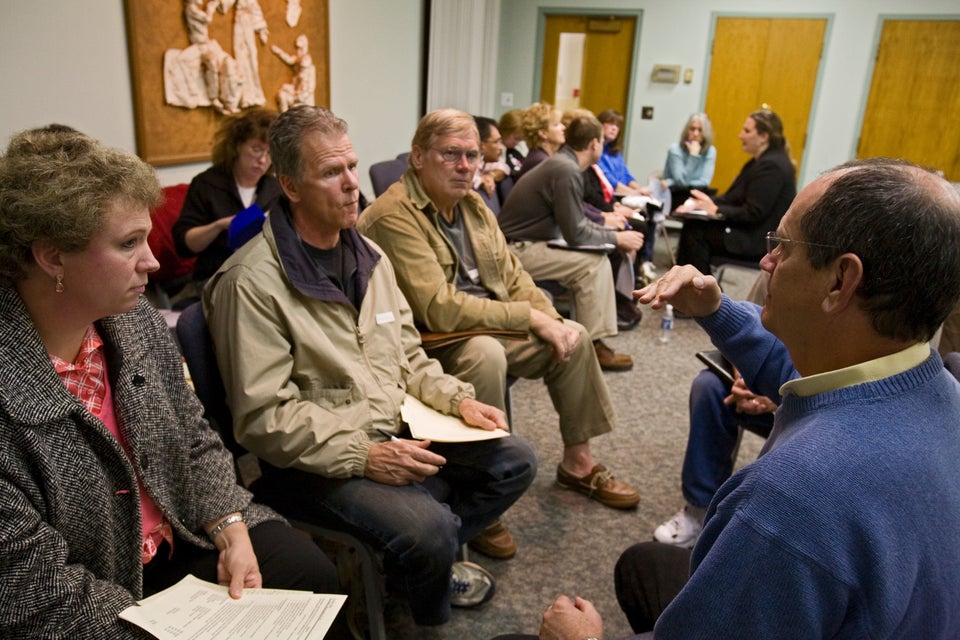
Nearly four million seniors are malnourished in the United States, according to The American Academy of Family Physicians. While this number is staggering, it's not surprising. From changing taste buds, to the physical demands of preparing meals, a lack of companionship in some cases and even dental problems that make it uncomfortable to eat, seniors face a plethora of challenges when it comes to maintaining a nutritious diet. As most of us have an elderly loved one in our lives, these statistics are a reminder that we must understand the issues associated with eating well and how we can help.
Recognizing the widespread impact of these problems, I teamed up with A Place for Mom, the nation's largest senior living referral service. As a physician and a daughter, I'm motivated to help this organization shed light on the difficulties our seniors encounter in trying to eat well and how tweaking their diets can vastly improve their health and quality of life.
First things First
When taking stock of your loved one's health, pantries and refrigerators are a good place to start. If they are bare or contain old food, this could be a clue about the way they are eating.
An unusual amount of weight loss or weight gain can also be a sign of malnourishment. Check the fit of their clothing; you may find it's excessively loose or tight. Other signs include unnatural-looking and excessive bruises and wounds that take a long time heal, which can point to a lack of proper food consumption.
How to Help
Education and encouragement can make a difference for seniors who may be struggling. If appetites are low, it is important that meals are packed with essential vitamins and nutrients. Consider incorporating these five essential nutrients and vitamins when planning meals.
Folic Acid
Folic acid helps to decrease the buildup of high blood levels of homocysteine, which can put seniors at risk for heart disease and other chronic illnesses. It is also needed for proper red blood cell production. Foods high in folic acid include: spinach, asparagus, lentils and many fortified breakfast cereals.
B12
B12 helps our bodies synthesize protein and aids in mental function. Many older adults can no longer absorb enough, so increasing B12 rich foods and adding a vitamin supplement should be considered. Recommended foods are: turkey, chicken, beef, eggs, milk, baked salmon, clams, mussels and crab.
Vitamin C
The body's need for vitamin C increases with age. Seniors should incorporate at least five servings of fruits and vegetables a day. Strawberries, oranges, grapefruit, tomatoes, broccoli, red bell pepper and potatoes are all rich in vitamin C.
Vitamin D
As we age, vitamin D can't synthesize in the skin as quickly, but fortunately levels can be boosted by eating foods with quantities like oatmeal, fortified cereal, egg yolk, canned pink salmon, sardines or mackerel, cow's milk or soy milk and orange juice fortified with vitamin D.
Essential Fatty Acids
Fatty acids play a central role in reducing inflammation in the body. The best source is fish, which should be consumed at least two times a week. Flax seeds are also rich in essential fatty acids and can be sprinkled on to a number of dishes, including salads, cereals and smoothies.
Last but not least, seniors need to stay hydrated and should have nine 8-ounce glasses of fluid a day. Water is best.
More information on these vitamins, along with other nutrition tips and recipes, can be found on this helpful Senior Nutrition blog.
Regardless of age, maintaining a healthy, balanced diet can be difficult. Whether grocery shopping together or assisting in meal planning, supporting a loved one can have a big impact on his or her choices and quality of life -- and maybe your own as well.
Earlier on Huff/Post50:
